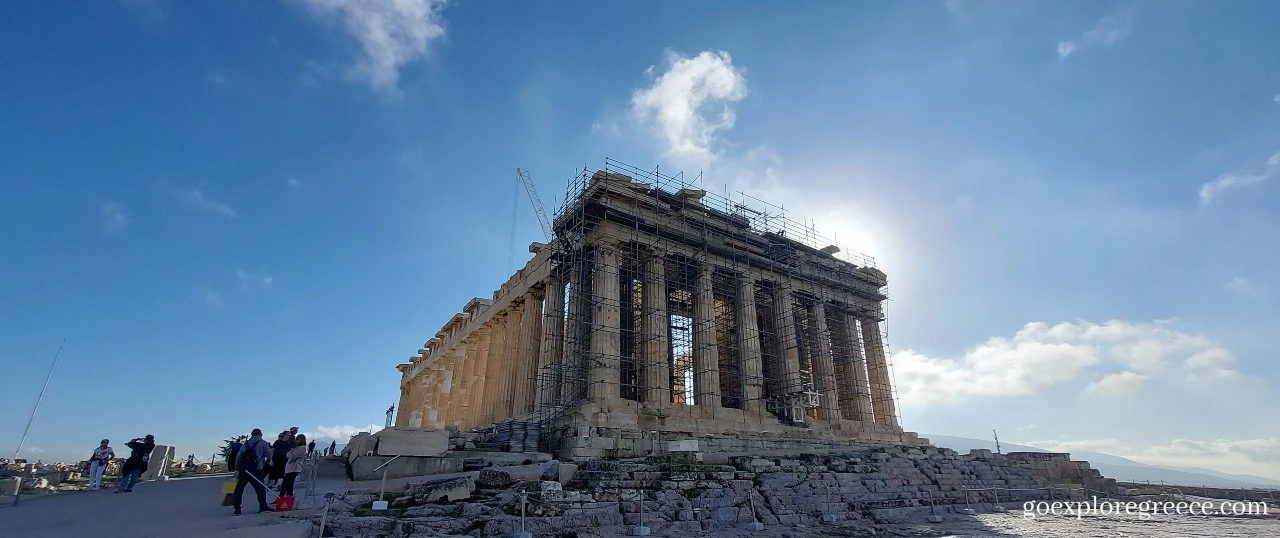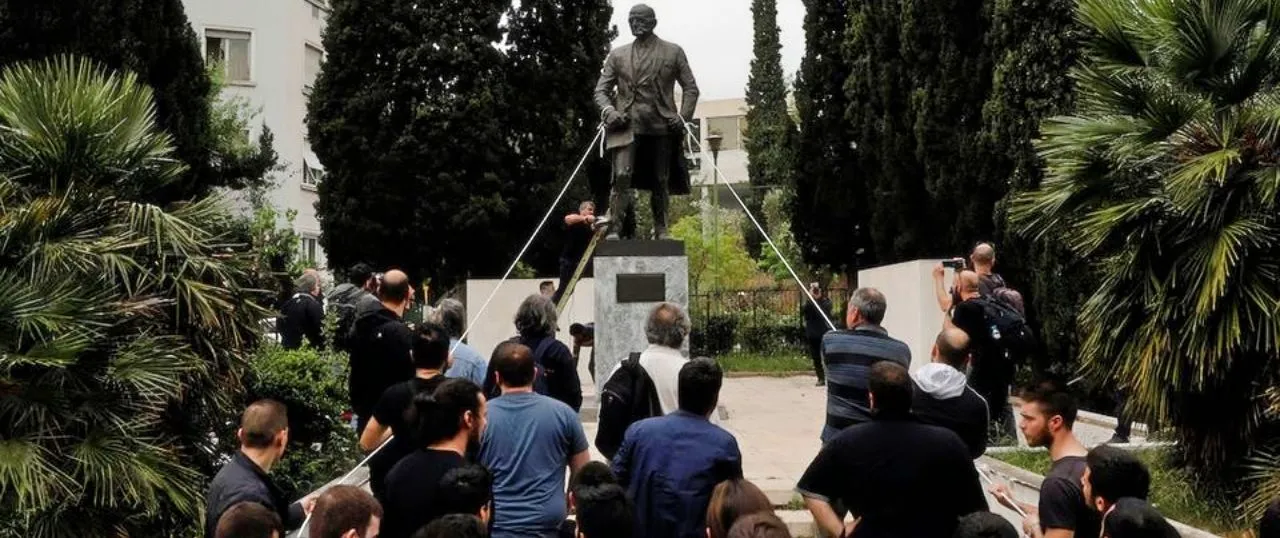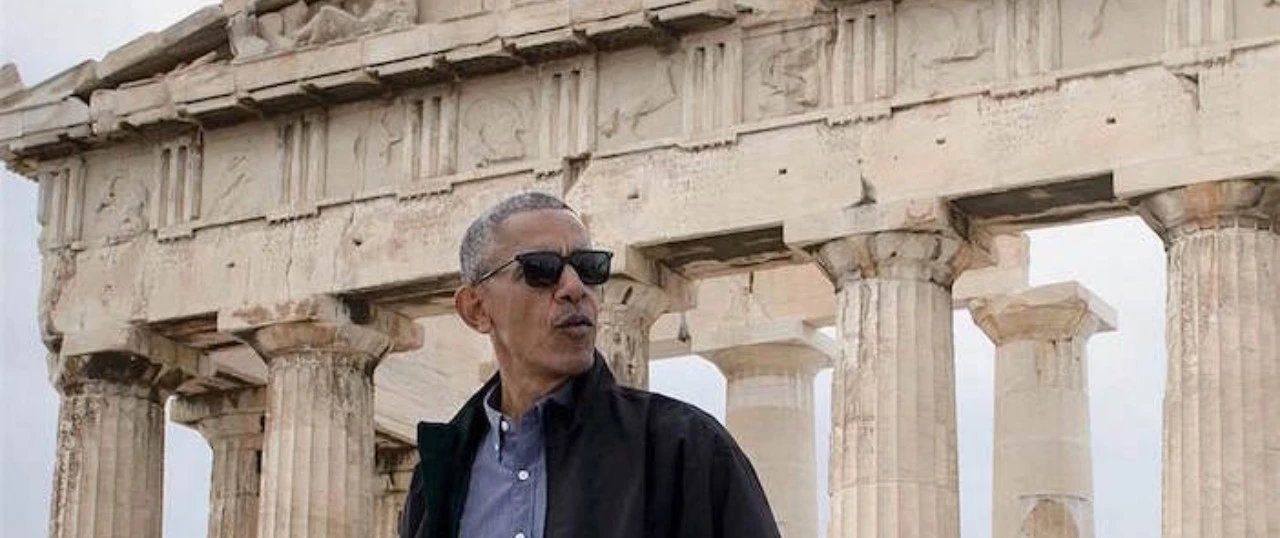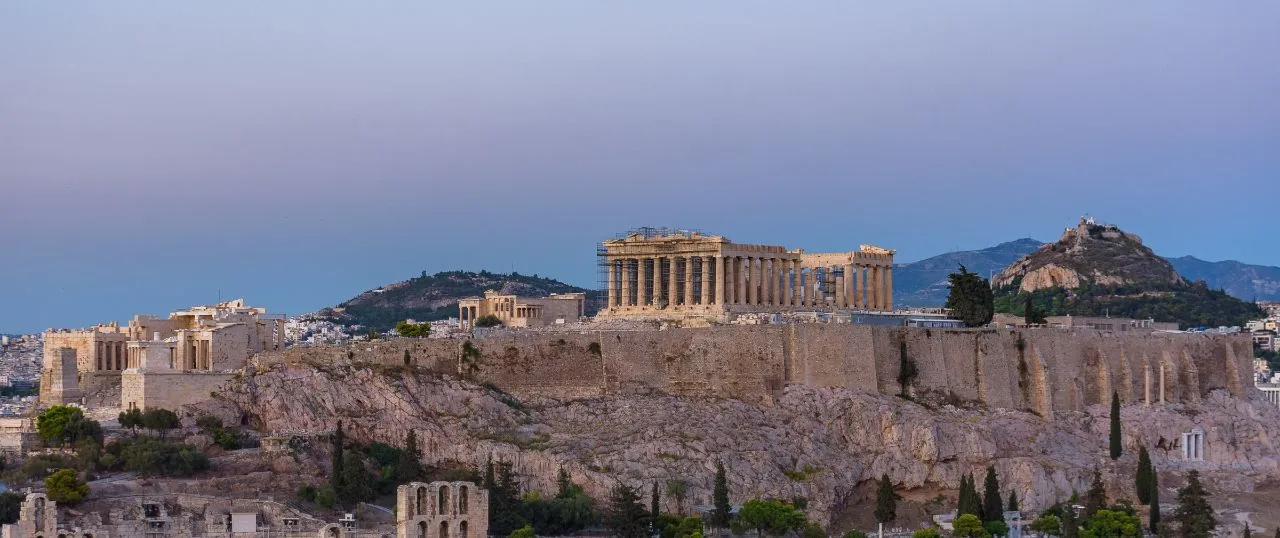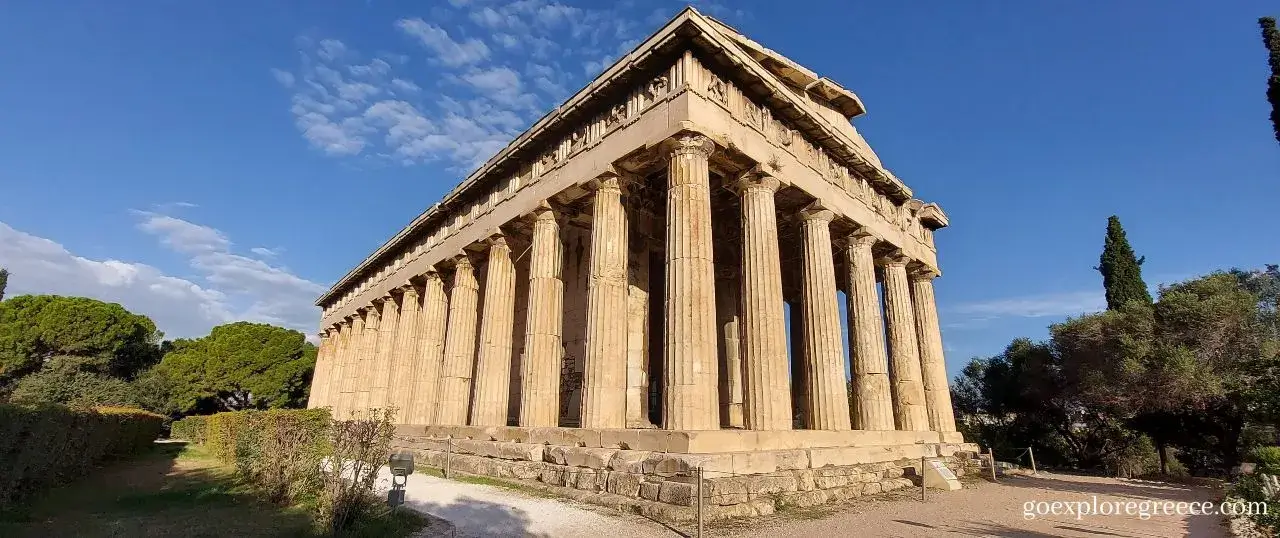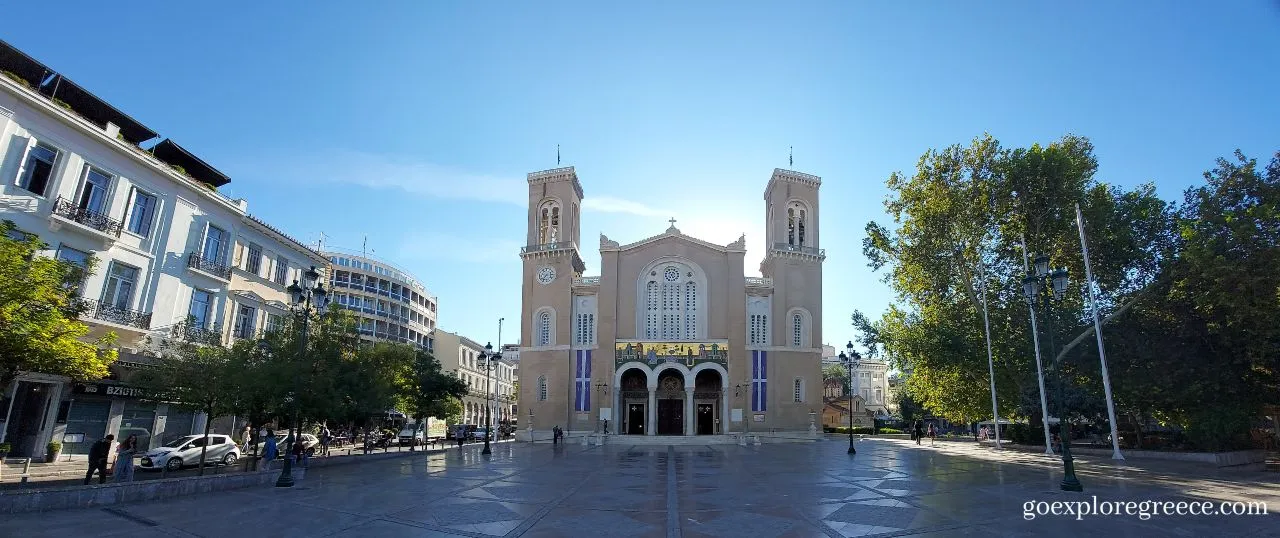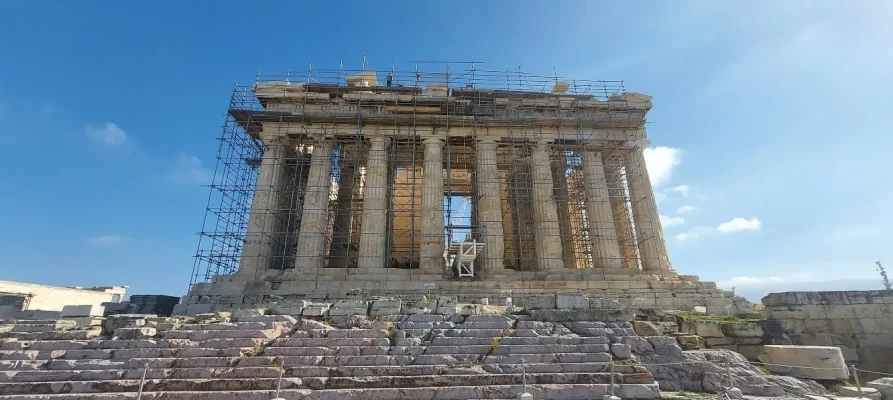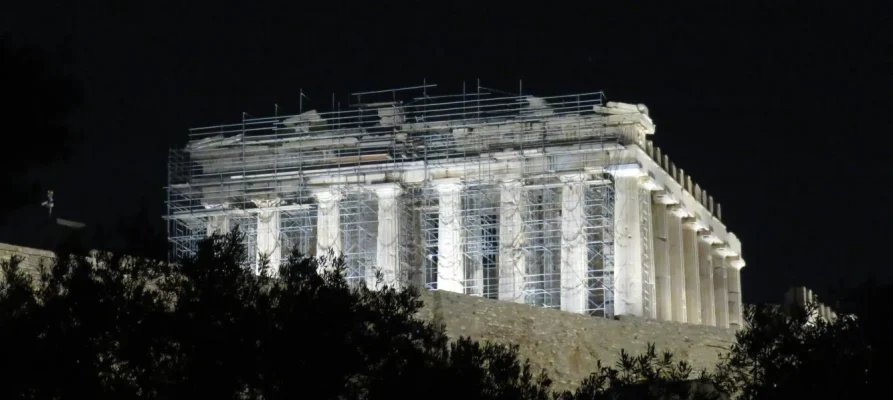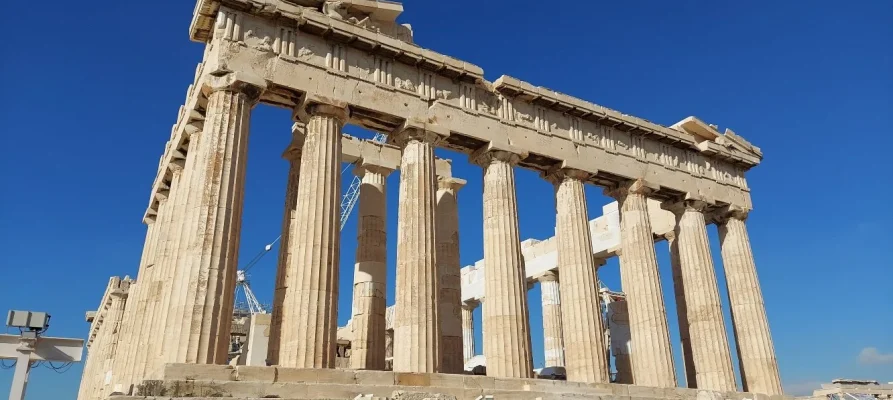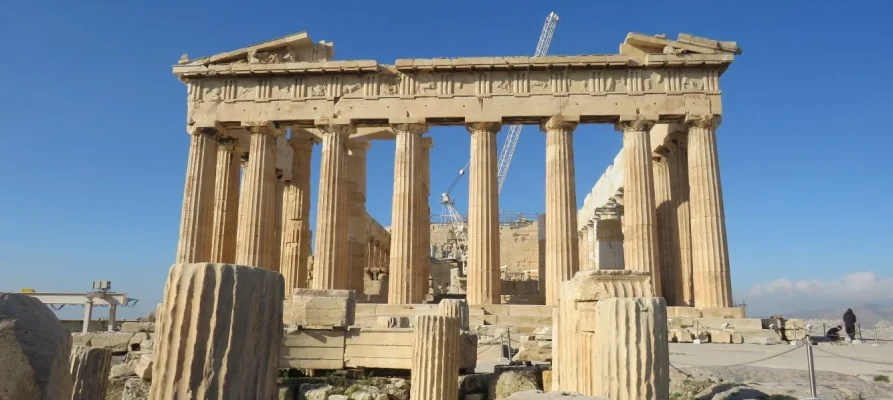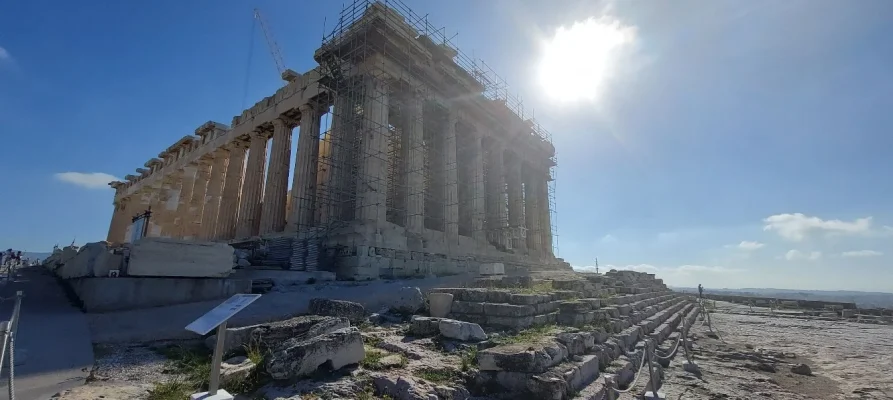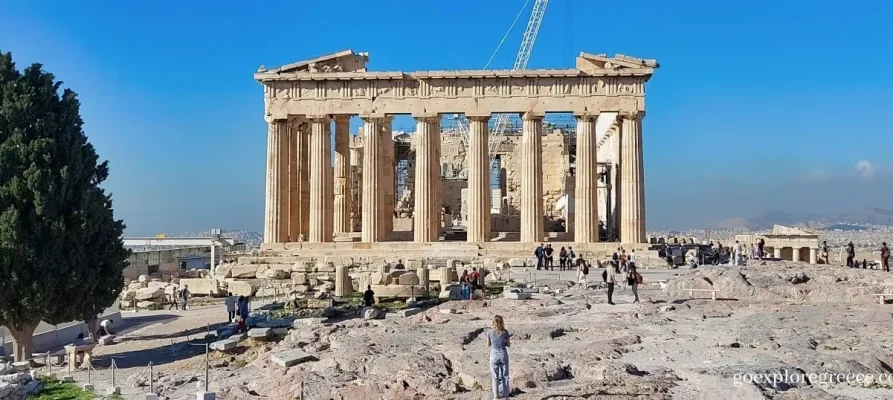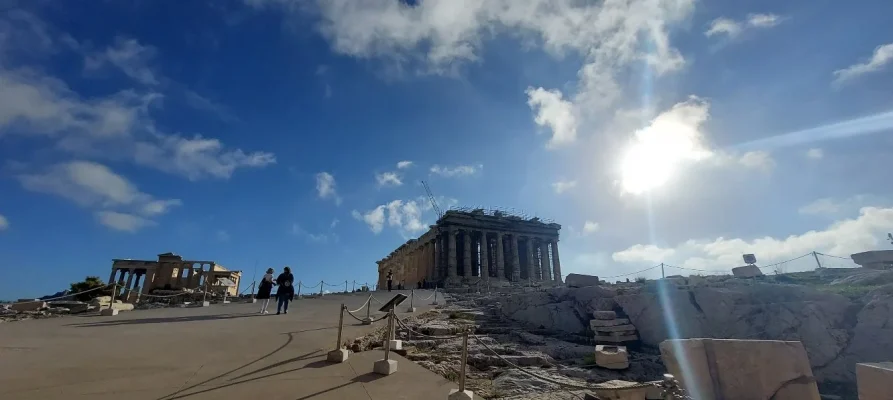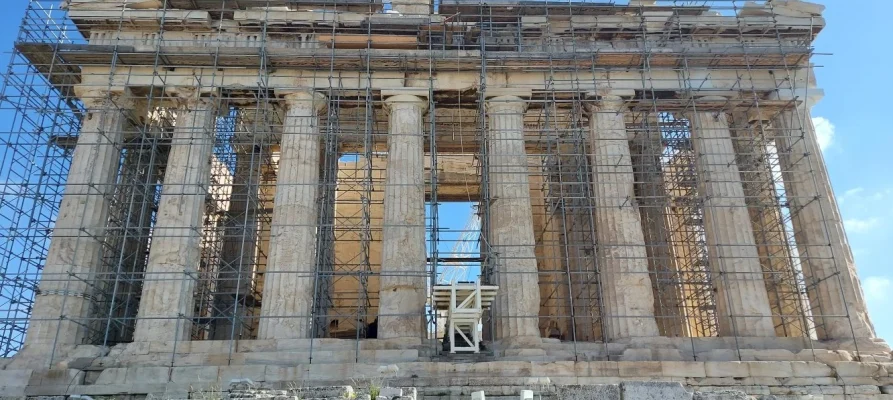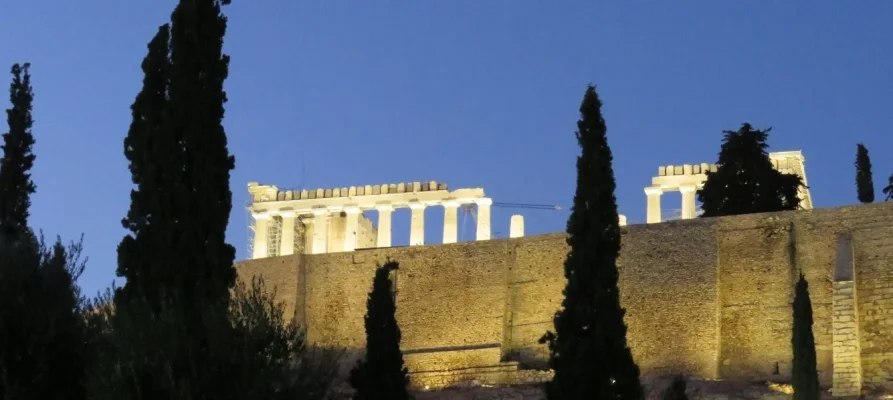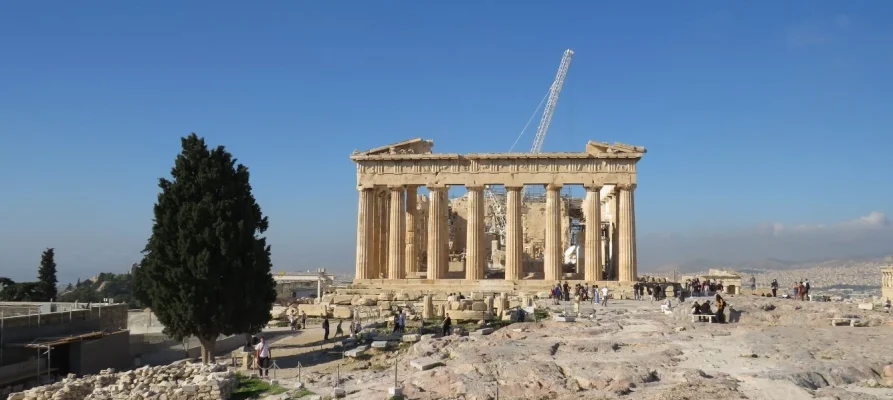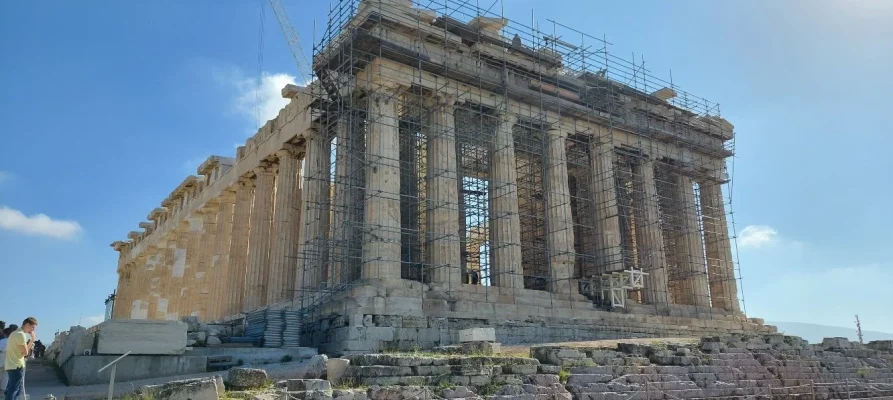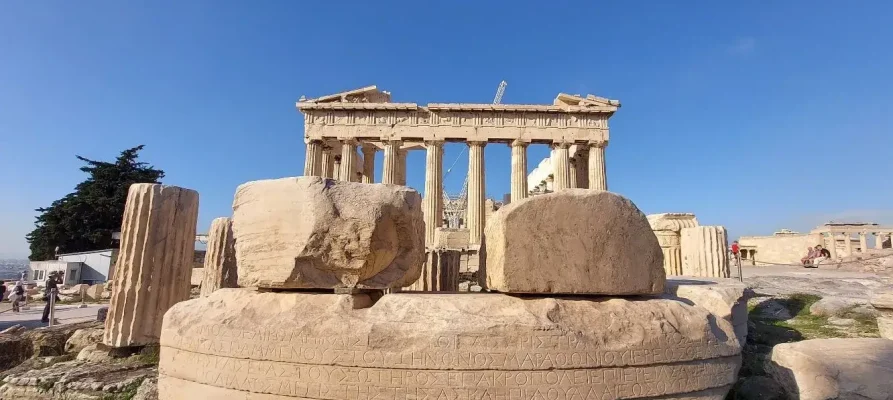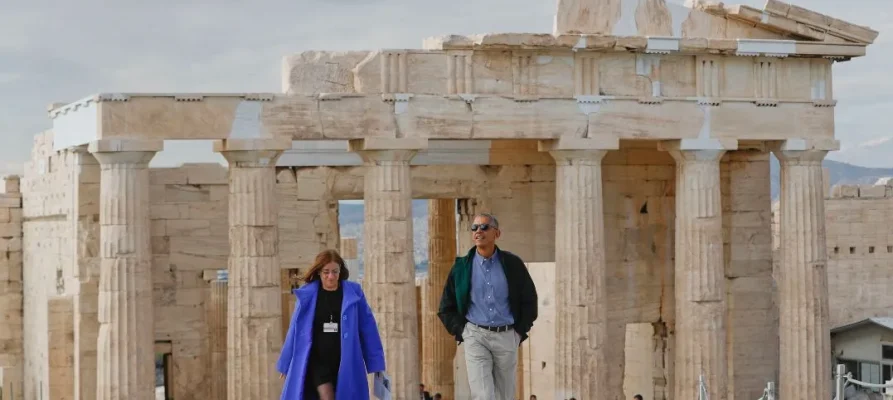Parthenon
Parthenon
Of all the top things to do and see in Athens, the Parthenon on the Acropolis of Athens truly stands out as “the” most awe-inspiring sight that you simply cannot miss on your visit to the city.
The Parthenon, also known as the Temple of Athena Parthenos, was built during the height of the Athenian Empire between 447 and 438 BCE. Its purpose was to serve as a temple dedicated to the goddess Athena, the city’s patron deity. Designed by the renowned architects Ictinus and Callicrates, it is a prime example of ancient Greek architecture, embodying the Doric order with its impressive colonnades and intricate carvings. As you wander through the Acropolis, you’ll realise the Parthenon’s significance in the rich tapestry of Athenian history.
So, how big is the Parthenon? Its dimensions are approximately 69.5 metres (228 feet) in length, 30.9 metres (101 feet) in width, and 13.7 metres (45 feet) in height at the top of its pediments. The temple consists of 46 Doric columns, with eight columns on each of the shorter sides and 17 columns on each of the longer sides, which support the entablature and give the structure its grand and imposing appearance.
One of the most fascinating aspects of the Parthenon is its marbles, which has been a topic of controversy and debate for centuries. The Elgin Marbles, also known as the Parthenon Marbles, were removed from the temple by Lord Elgin in the early 19th century and now reside in the British Museum. These marbles, comprising sculptures, friezes, and metopes (rectangular, carved relief panels), are an integral part of the temple’s history and a symbol of the cultural heritage of Greece. When visiting the Parthenon, you’ll have the chance to see the remaining marbles up close, allowing you to appreciate the incredible craftsmanship and artistry that went into their creation.
As you explore the Acropolis of Athens, the Parthenon will undoubtedly be the focal point of your visit. This magnificent structure is an important historic site and offers stunning panoramic views of Athens, making it a must-see attraction. As you gaze upon the temple’s imposing columns and intricate details, you can’t help but feel a deep sense of wonder and admiration for the ancient Greeks who built this architectural masterpiece.
While there are many activities and attractions in Athens, a visit to the Parthenon is undoubtedly one of the top things to do in this vibrant city. The temple’s rich history, architectural splendour, and incredible location make it a must-visit destination for anyone exploring the wonders of ancient Greece. As you stroll through the Acropolis, you’ll be transported back in time, walking in the footsteps of great philosophers, artists, and leaders who once roamed these ancient grounds.
In addition to the Parthenon, the Acropolis of Athens is home to several other significant monuments and archaeological sites. These include the Erechtheion, an ancient Temple of Athena Nike, the Propylaea, a monumental gateway that serves as the entrance to the Acropolis, and the Temple of Athena Nike, a smaller temple honouring the goddess of victory. Each of these structures contributes to the unparalleled historical and cultural significance of the Acropolis, making it one of the most important tourist attractions in the world.
For those looking for things to do in Athens, the Parthenon and the Acropolis should be at the top of your list. The opportunity to immerse yourself in ancient history, admire the breathtaking architecture, and learn about the fascinating story of the Parthenon marbles is an experience that you’ll cherish for a lifetime. As you explore the Acropolis and its many treasures, you’ll come to understand why the Parthenon is widely regarded as a symbol of ancient Greece, democracy, and Western civilisation.
Not only does the Parthenon offer an unparalleled historical experience, but it also provides an excellent opportunity to capture stunning photographs. With the temple’s majestic columns and the city of Athens spread out below you, you’ll be able to create lasting memories of your time spent exploring this ancient wonder. As you look out across the city, you can truly appreciate the significance of the Parthenon and its enduring impact on the world.
From the top of the Acropolis of Athens, you’ll now have the best views of the top things to see in Athens, including the Theatre of Dionysus, Stoa of Attalos, the Temple of Hephaestus, the Ancient Agora of Athens, the Acropolis Museum, the Pnyx, Mount Lycabettus, the Arch of Hadrian, Filopappou Hill, the Temple of Olympian Zeus, the Odeon of Herodes Atticus, the Zappeion Garden, and the Athens National Garden.
As you leave the Acropolis and make your way through the bustling streets of Athens, you’ll carry with you a newfound appreciation for the ancient Greeks and their remarkable achievements. The Parthenon is more than just a tourist attraction; it’s a testament to human ingenuity, a symbol of perseverance, and a reminder of the beauty that can be found in the world around us.
In conclusion, visiting the Parthenon is an experience you’ll always remember. From its breathtaking architecture to its fascinating history, this iconic temple is a must-see attraction for anyone travelling to Athens.
Because the Parthenon is so popular, I highly recommend you book in advance. Take it from me when I say that over the years, it’s been the best way to jump the queues and save money. You can choose from many tickets right here, but I’ve selected the most popular ones below.
Not only do I enjoy savings of up to 50%, but I also bypass the long queues of tourists waiting to enter these popular sites. Trust me, investing in this ticket makes my Athens adventure so much smoother and more enjoyable:
Here’s my advice regarding access for those with disabilities and/or impairments at the Parthenon on the Acropolis of Athens:
The Acropolis and the Parthenon have made efforts to improve accessibility for visitors with disabilities and impairments. A wheelchair-accessible route is available, starting from the main entrance of the Acropolis, and leading up to the plateau where the Parthenon and other monuments are located. A lift, specifically designed for wheelchair users and people with mobility issues, is also available near the entrance of the Acropolis to help them reach the top.
While the accessible route covers most of the main monuments, it is essential to note that the terrain can still be uneven and challenging in some areas. Therefore, visitors with disabilities should be accompanied by a companion for assistance if needed.

